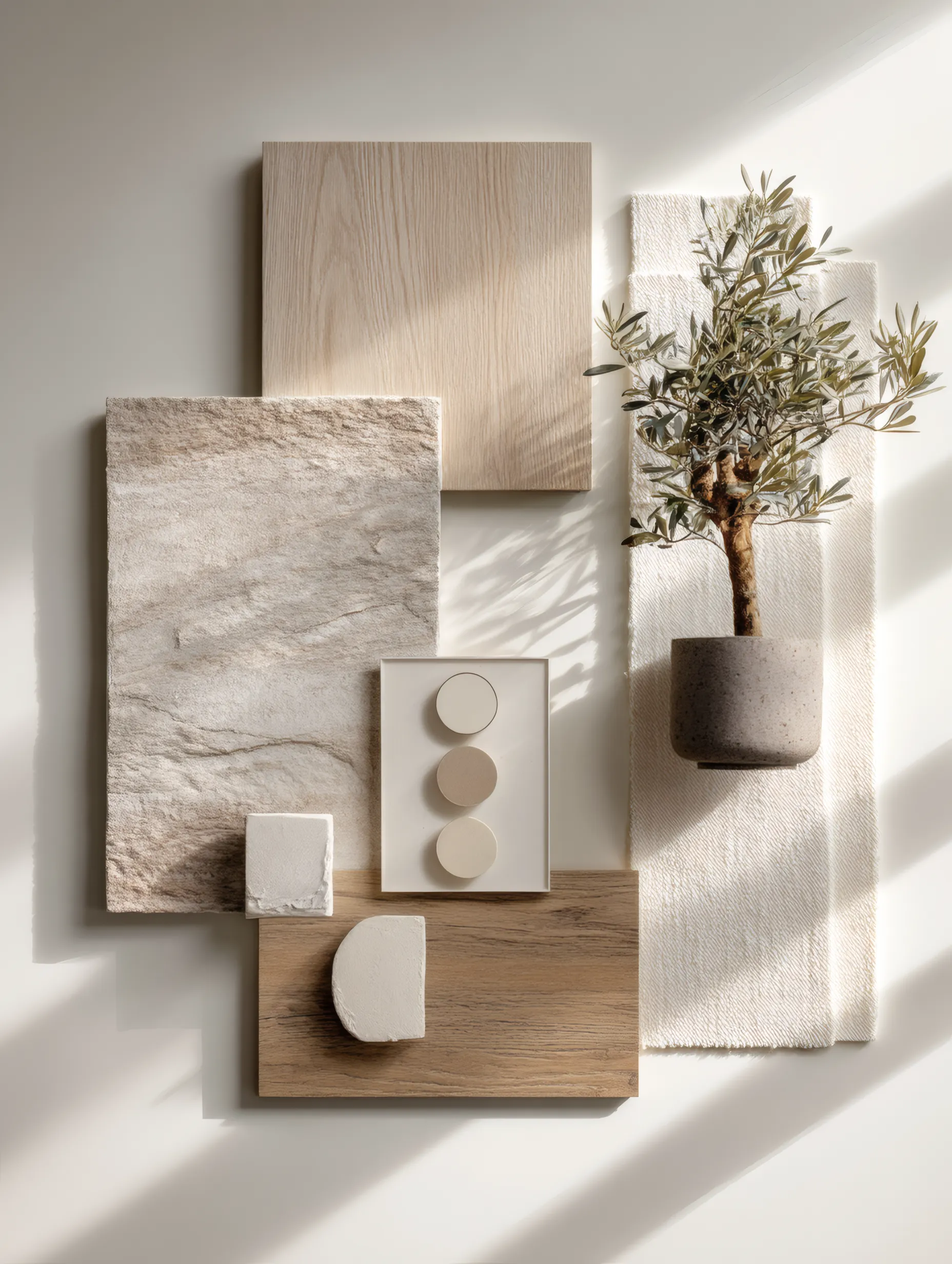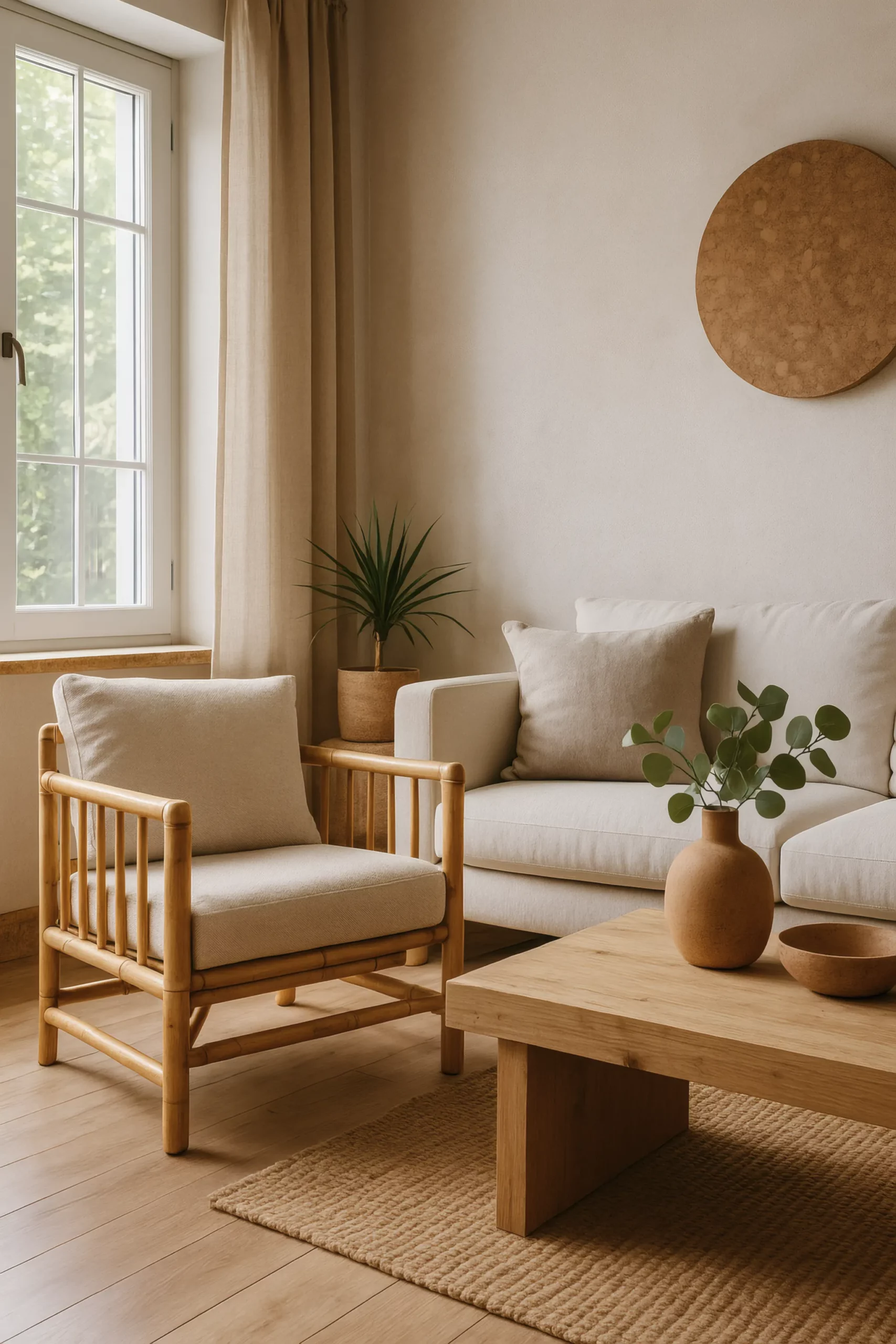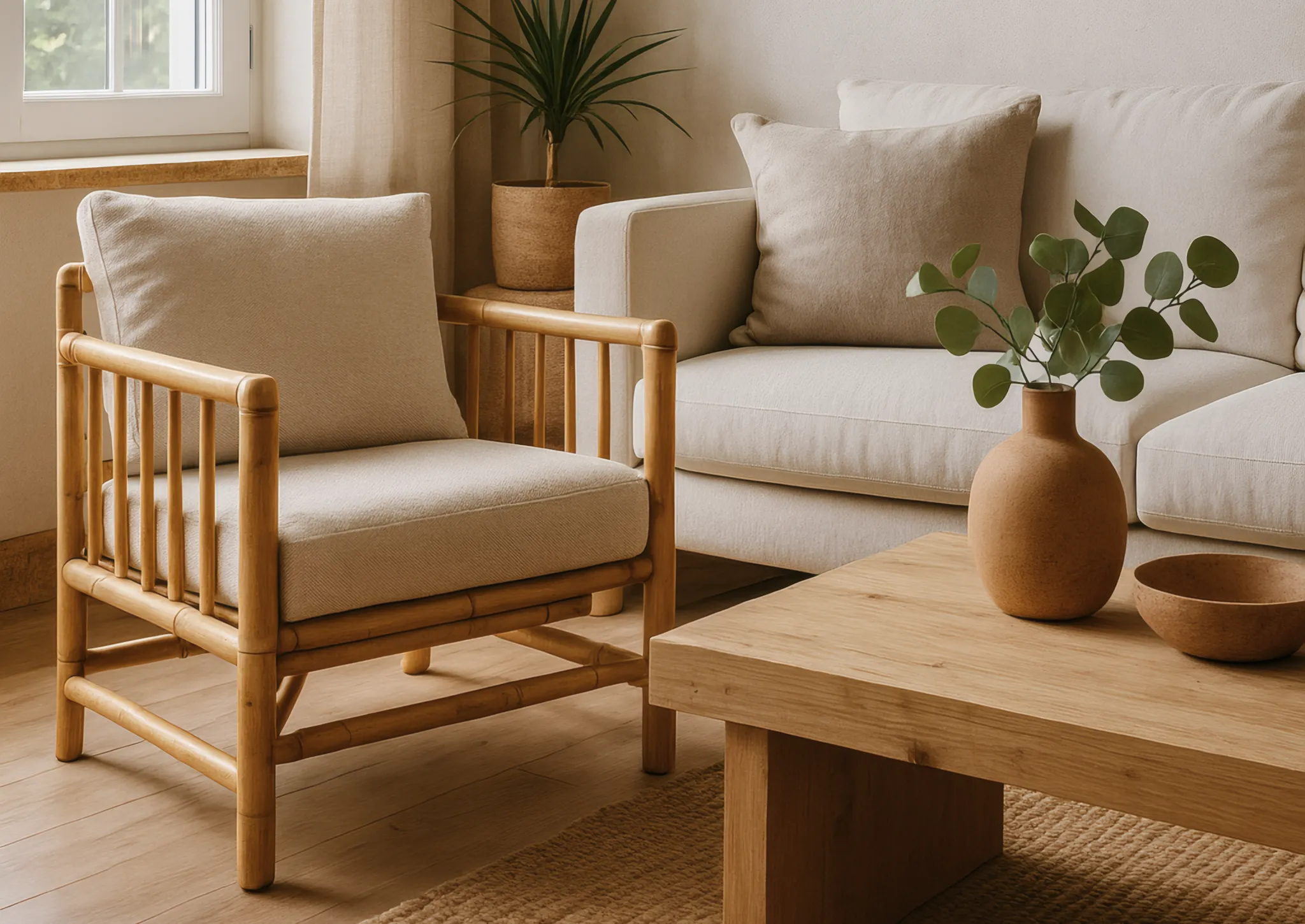Reducing the ecological footprint in the residential environment
The building sector is one of the biggest emitters of CO₂ in Switzerland. By opting for eco-friendly materials in your interior design, you are actively helping to reduce the environmental impact of your home. This means choosing raw materials that are low in grey energy, renewable, local and non-toxic.
A responsible choice that’s valued in the canton of Vaud
There are many initiatives in favour of sustainable development in the canton of Vaud. Local authorities such as Renens encourage eco-responsible practices, particularly in the home. Choosing eco-friendly materials also means anticipating future requirements in terms of energy and environmental legislation.
How can you recognise an environmentally-friendly material?
The essential criteria
Local and renewable natural resources
A material is eco-friendly if it comes from a renewable (wood, hemp, cork) or recycled resource, and if its extraction does not deplete ecosystems.
Grey energy and life cycle
Grey energy refers to the amount of energy used to produce, transport and recycle a material. The lower it is, the more sustainable the material. It is also essential to consider the recyclability of the product at the end of its life.
Swiss labels and certifications
- Natureplus: strict health, ecology and performance criteria.
- Eco-bau: Swiss database for sustainable materials.
- Minergie-ECO: use of healthy materials in construction.

Sustainable flooring materials: the footprint of your commitment
Certified Swiss wood (FSC, PEFC, Swiss Wood)
Choosing a floor made from local, certified, non-chemically treated wood means opting for natural warmth while supporting sustainably managed Swiss forests.
Natural stone from the Jura mountains or the Swiss Alps
A noble and timeless material, it’s perfect for both rustic and contemporary interiors. What’s more, it comes straight from home!
Recycled or low environmental impact tiles
Some Swiss brands offer tiles made from recycled materials (glass, ceramics). They are stylish, durable and easy to fit into any room.
Responsible wall coverings for a healthy environment
Clay or lime plasters (Swiss products available)
These natural coatings offer an alternative to conventional paints, which often contain high levels of volatile organic compounds (VOCs). Clay and lime provide natural moisture regulation and are available from Swiss suppliers such as Fixit and HAGA. Their mineral texture adds warmth and authenticity to your walls.
Natural, VOC-free paints: where can you buy them in Renens?
In Renens and the Lausanne region, brands such as Ökozentrum, Ecobati Suisse and hardware stores specialising in eco-construction offer casein-, silicate- and plant-pigment-based paints. These health-friendly solutions are ideal for bedrooms and living rooms.

Textiles and furniture: buying the right items without harming the planet
Swiss or European linen and hemp
Grown without pesticides and using very little water, these textiles are soft, hard-wearing and naturally antibacterial. They are ideal for curtains, tablecloths and cushion covers.
Furniture made locally from recycled materials
Rather than importing mass-produced furniture, why not give preference to local craftsmen who work with recycled or reused wood? Atelier Interior Design can also incorporate this type of furniture into its made-to-measure projects.
Vaud craftsmanship and ecological design
The canton of Vaud is bursting with talent in cabinet-making, upholstery and textile design. Working with these professionals means reducing the carbon footprint of your purchases while supporting the local economy.
Pitfalls to avoid in eco-decoration
Beware of greenwashing marketing
Many products claim to be ‘green’ or ‘eco’ without meeting real environmental criteria. Always check the labels and ask questions about the composition, origin and end-of-life of products.
The myth of ‘new eco’ versus second-hand
It’s often more environmentally friendly to renovate or give a makeover to an old piece of furniture than to buy a new one, even if it’s ‘eco-friendly’. The second-hand market in Lausanne and Renens (via flea markets, resourceries and the Ricardo.ch platform) is full of treasures.

Practical advice for reconciling aesthetics and sustainability
Think in cycles: from choice to end of life
An environmentally-friendly material should be easy to reuse, repair or recycle. Think about the modularity of your furnishings, the maintenance of materials and their evolution over time.
Minimalist, multifunctional design
Fewer objects, but better thought out! Choosing simple, timeless, quality pieces helps to reduce over-consumption while creating an elegant, soothing atmosphere.
Good places to buy ecological materials in the canton of Vaud
Specialist shops in Renens, Lausanne and surrounding areas
Ecobati Suisse (Lausanne) : natural coatings, VOC-free paints, bio-sourced insulation.
Bauwerk : certified, durable wood flooring.
Batiplus : choice of tiles and recycled materials.
Reliable Swiss online platforms
Ricardo.ch: for local second-hand goods.
Slow Design: ethical objects and furniture.
Green Home: eco-friendly decorative materials and accessories.
Conclusion
Sustainable interior design in Renens, a choice for the future
Choosing eco-friendly materials for your home is much more than just an aesthetic decision. It’s a commitment to the environment, your health and the local economy. Thanks to the expertise of atelier interior design, you can combine elegance, comfort and sustainability in each of your projects in Renens and throughout the canton of Vaud.
FAQ
1. What is the best ecological floor for a home in the canton of Vaud?
Certified Swiss wood flooring is still a safe bet. For damp rooms, recycled tiles are ideal.
2. Where can I buy natural paint near Renens?
At Ecobati or via Swiss online retailers such as Nature & Harmonie.
3. Are eco-friendly materials more expensive?
When you buy them, sometimes yes, but their durability, ease of maintenance and added value more than make up for it over time.
4. Can I incorporate eco-responsible materials into a partial renovation?
Absolutely. You can change the coverings, add a piece of furniture made from recycled wood or replace your textiles little by little.
5. How can I be sure that a product is really eco-friendly?
Check for certifications (FSC, Natureplus, Eco-bau) and ask suppliers for technical data sheets.
6. Does ecology limit the choice of decorating styles?
Not at all! Today, eco-responsible design is just as rich and varied as conventional design. It ranges from rustic to contemporary, via Nordic minimalism.
Transform your space with our exclusive advice: subscribe to our newsletter now.
Your confidentiality is our priority. Your data will remain secure and will never be shared. Register with confidence.

